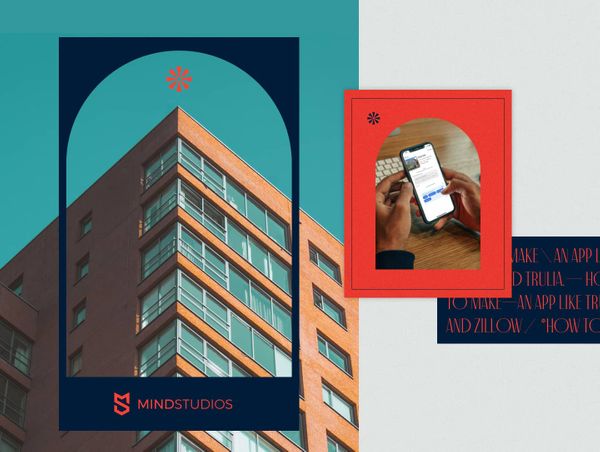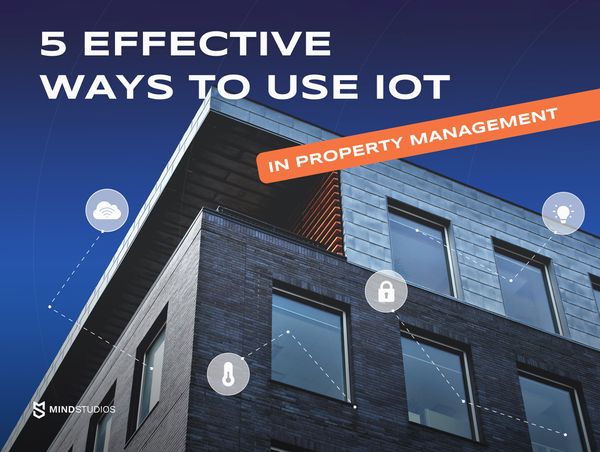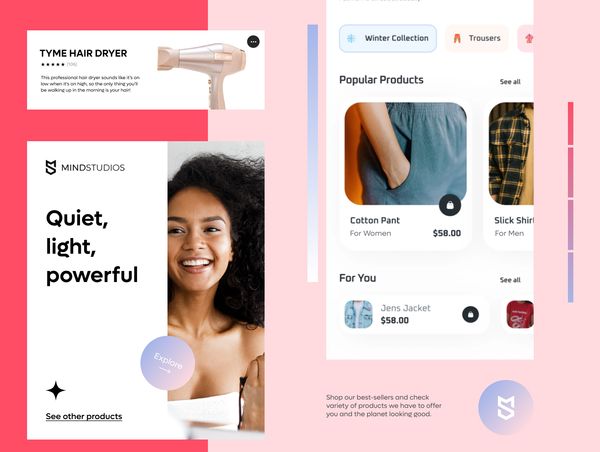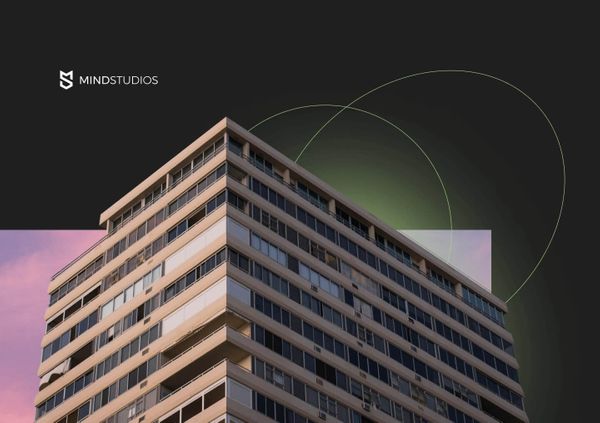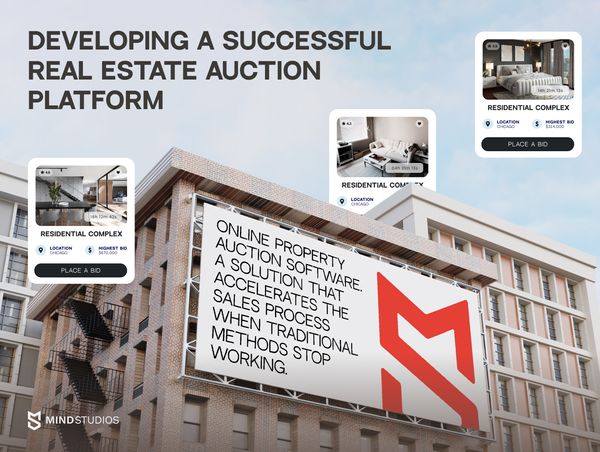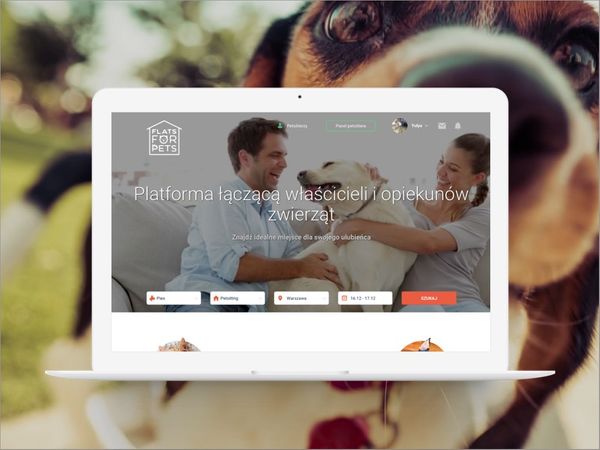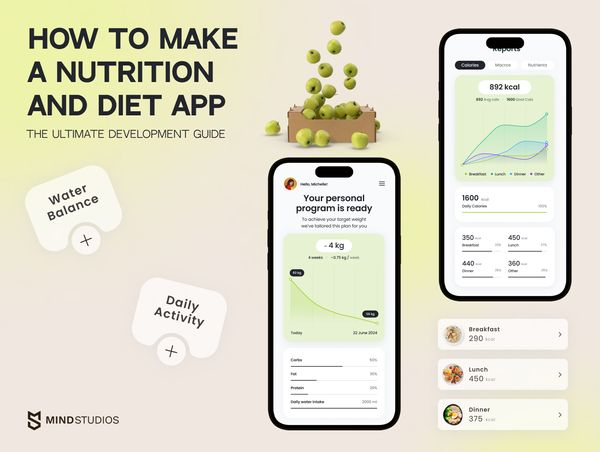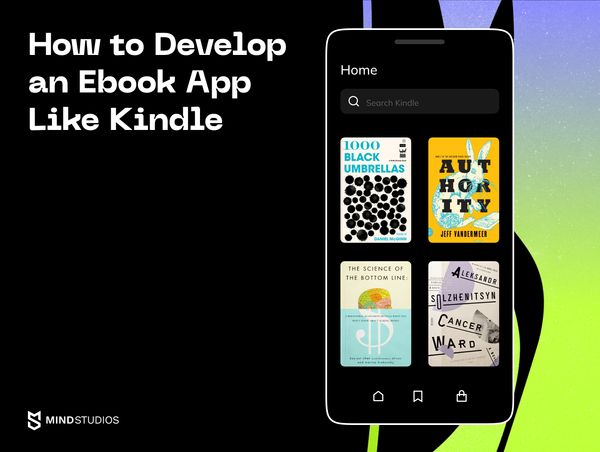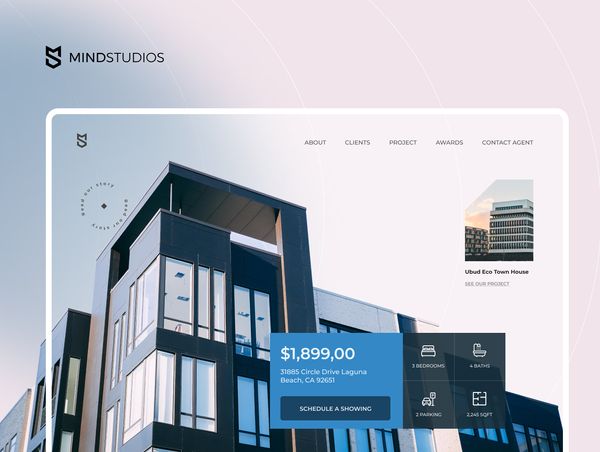
Today, many real estate agents are fundamentally changing their approach to business. More and more often they decide to create a website for real estate purposes, promote their services via social media, and adopt to new purchasing habits of their clients, many of whom are from the millennial generation.
According to the Zillow survey, 39% of millennials said they would be comfortable buying a home online. Moreover, tech trends like AR features, 3D walkthroughs, and advanced mortgage calculators have made the process even more convenient. The question is, how to make a real estate website that has a chance of competing with the big players on the market and not spend a fortune on it?
One of Mind Studios’ goals is to help entrepreneurs reach their business goals with the help of websites and mobile applications. Based on our experience with the real estate industry, in this article, we walk you through the development process and its costs, as well as share tips on making a real estate website that appeals to your customers.
Reasons to invest in real estate website development
With many well-established real estate platforms on the market, how can real estate agents benefit from building a real estate website of their own? These three reasons are an accurate illustration of why having a real estate platform has become an essential part of agents’ marketing strategies.
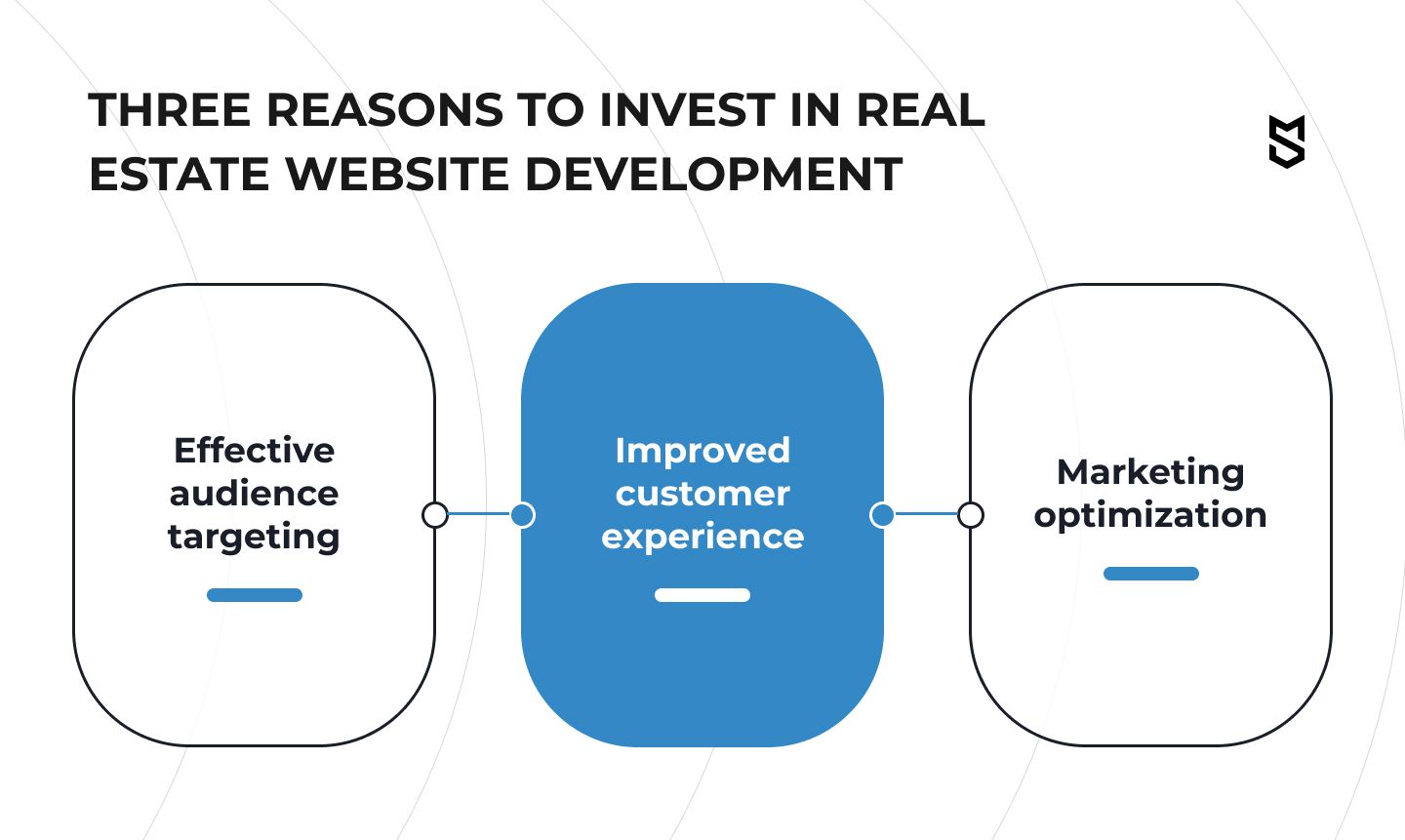
Effective audience targeting
The biggest argument in advertising services and property via a digital platform is the fact that it simply is the best way to reach the target audience.
In the US, for example, 93% of buyers visit websites when looking for homes. At the same time, millennials are the biggest group of home buyers on the US market, making up for 43% of purchases as of 2022. And this generation is definitely more allured by offers found online than on the lawn signs.
According to a 2021 Millennial Home Buyer Report by Clever Real Estate, 44% of millennials claimed they could buy a home simply based on listing pictures, while 59% would be ready to buy a home if someone checked it on their behalf. In addition to this, such giant platforms as Zillow and Redfin report the increasing demand for 3D tours on their websites, especially during the pandemic.
As is clear from the reports above, a solid online presence has already become a must for real-estate agencies who want to close deals with the biggest target audience out there. And the decision to build a property website is an essential step of that, just like social media presence is.
Improved customer experience
To actually transform the visitors of your website into leads, it has to serve a real purpose and meet users’ requirements. In order to make the platform helpful, you will need to study the needs and pain points of your target audience.
However, there are a few basic features of a real estate website that will be needed in any case, including:
- Advanced filtering
- High-quality pictures and detailed descriptions of the property
- Easy way to reach you or other real estate agents at your agency
To sum up, a one-page website technically serves a purpose of maintaining an online presence, however, it needs to be more complex if you want it to bring new customers.
Marketing optimization
Real estate agents and agencies that decide to create a website for real estate business purposes also can expect the process of marketing to get easier. For instance, a web platform can allow you to advertise the property and your services via search engine marketing and pay-per-click marketing.
On top of that, you can use a website for content marketing, meaning you can write helpful blog posts there or even start a podcast. What is more, a website can help agents make more valuable and therefore effective content by providing access to detailed analytics reports on how users interact with the platform.
Types of real estate websites
The type of web platform you need to build is determined by your role in the real estate industry and the business goals you want to achieve. Here, we’ve collected the four most common kinds of real estate websites on the market.
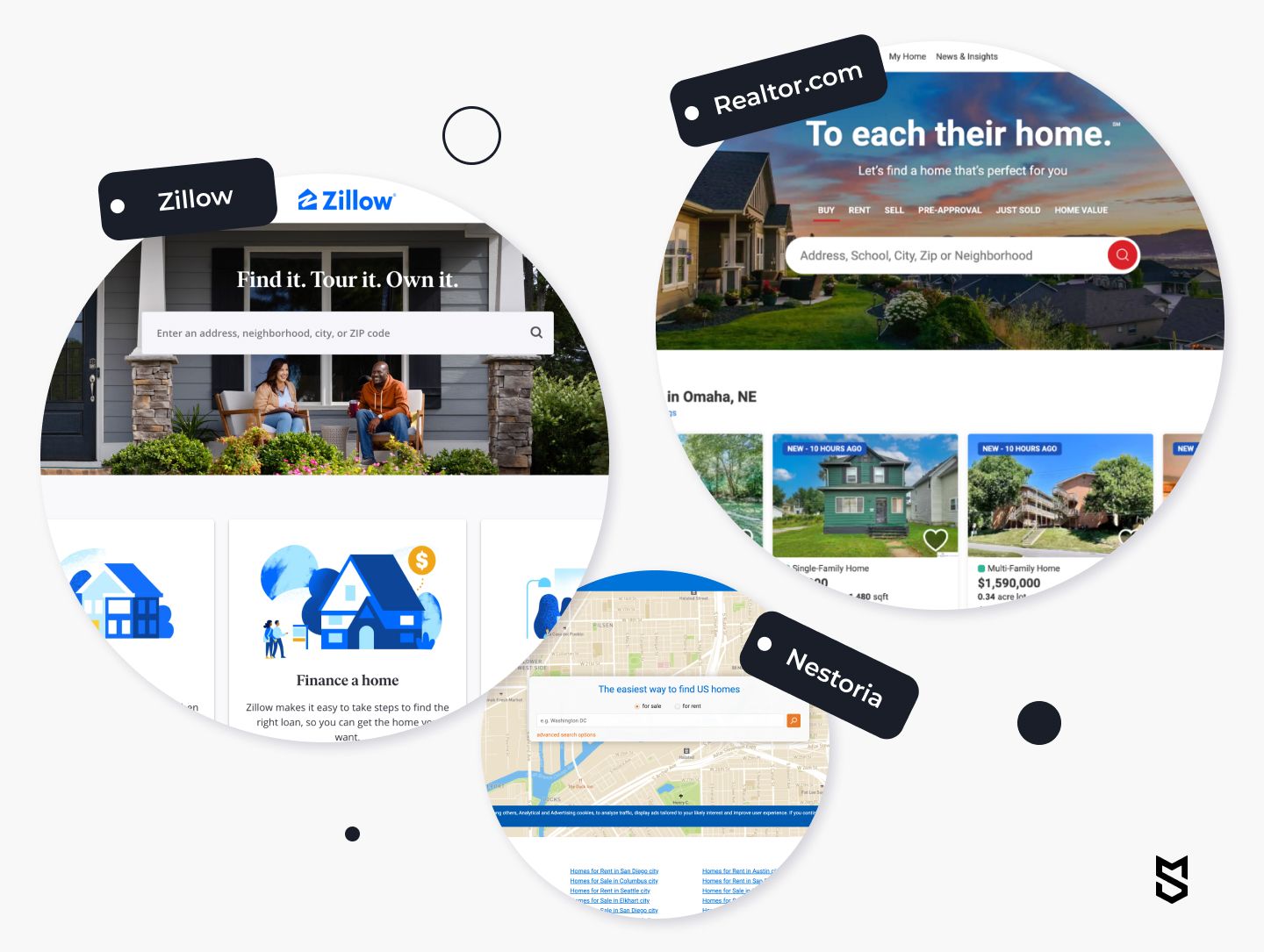
Real estate marketplaces
These platforms serve as a mediator between property owners and buyers or renters. Here, the owners can post their houses and other property, set the price, add the descriptions, and find prospective customers. Examples of real estate marketplaces include Zillow and Airbnb.
Property listing websites
Property listing platforms are similar to real estate marketplaces since users can also look for property to buy or rent. However, the listings are usually posted by real estate agents, not property owners. RightMove and Realtor are some of the most popular examples of such websites.
Property management websites
Property management platforms are created specifically for property owners, allowing them to handle selling and renting processes, as well as legal and financial aspects of property management. Appfolio, TennantCloud, and Yardi are the most vivid examples of such platforms.
Real estate aggregators
Aggregators collect data from other real estate platforms and place all those property listings on their own website, allowing users to find countless options in one place. This is a great option to make a real estate website. They are often considered the most convenient to those looking for property to buy or rent since here it’s easier to get a realistic picture of the market and find the option that fits you best.
Property owners also benefit here, because the more platforms place their listings, the higher the chances of closing the deal. Among famous aggregator websites are Nestoria and LoopNet.
In addition to these main types of real estate websites, they can also be divided into the following categories:
- Personal websites for real estate agents who use a personal brand Vs. Team websites developed for teams of brokers.
- Niche websites, focused on selling a specific type of property Vs. Multipurpose websites, advertising all kinds of property.
If you’re not sure what kind of website you need, don’t worry — that’s something we can easily establish during a 45-minute free consultation. All you have to do is prepare a basic outline of your business goals, contact us, and our business development experts will discuss your needs and possible solutions with you.
Technologies used in creating a real estate website
The success of your platform directly depends on the tools and technologies you and your development team choose to incorporate when building it. Here are three technologies our team recommends using if you decide to make your own real estate website.
Real-time data
Integrating real-time data sources like MLS (Multiple Listing Service) data or property data APIs can help you ensure that property information on your platform is always accurate up-to-date. This will directly influence the trustworthiness of your website.
Predictive analytics
The owners of real estate websites enhanced with predictive analytics tools can analyze historical data and user behavior patterns to forecast property values, future trends, market conditions, and more. You can also use it to help your users make better, more informed investment decisions and thus add value to your services.
Blockchain
This technology can help you achieve enhanced security and transparency in real estate transactions. For instance, blockchain can be used to streamline the property verification process and digital contracts, reduce the need for intermediaries, and improve trust among clients and partners.
AI-powered chatbots
AI chatbots or virtual assistants help provide instant 24/7 support to users looking for properties by answering common inquiries. Chatbots can typically handle basic queries, schedule property viewings, and even provide personalized recommendations based on user preferences. Besides, with ready-to-use AI plugins and APIs, it’s not that costly to implement.
Augmented reality (AR) and virtual reality (VR)
These technologies are becoming increasingly popular in the real estate industry since they allow users to visualize properties in real-world environments and make more informed decisions remotely. VR and AR enable enhanced property visualization, remote property viewing, and property customization, all of which create a huge competitive advantage.
Real estate website builders vs. Custom real estate website development
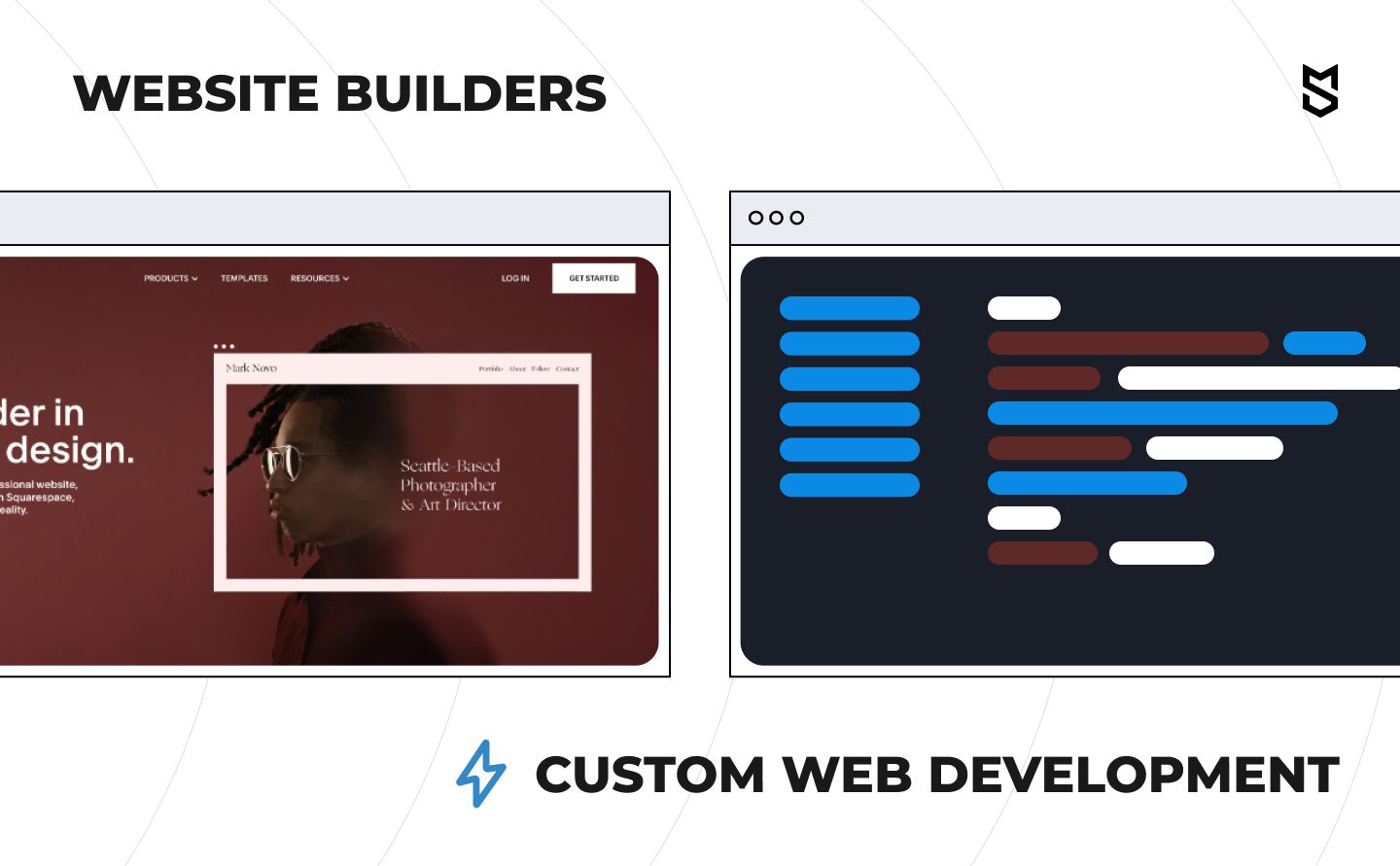
There are two ways to build a real estate website. You may use online web builders or hire a real estate solutions development company to create your own real estate website from scratch.
What to expect from real estate website builders
Web builders are usually HTML-based editors where you can build a web platform by simply using the available templates and without having to code it. The most popular real estate website builders are Squarespace, Placester, Wix, and Weebly. They’re suitable for simple landing pages, portfolio websites, and basic listing databases.
So, how to build a real estate website with the help of a web builder? Once you pick the builder, you will have to create an account there, choose an option that suits your budget, and pick a template for your platform. Then, you can edit the template, add your own content to it, and connect the platform to a domain name. Seems fairly simple. However, there are both pros and cons to this way of building a website.
Here are the main advantages and disadvantages of real estate web development with web builders.
Advantages
- No design or programming skills required since website builders are based on predeveloped templates.
- Numerous website builder options to choose from.
- Customizable templates with built-in functionality, at least when it comes to basic features.
- No need to come up with unique UI/UX design solutions or think through the customer journey.
- Responsive and mobile-friendly platforms.
Disadvantages
- Limited set of features, which makes it difficult and costly to add extra features and implement a unique vision for the platform.
- Difficult to promote on Google since it requires websites to have their own domains, unique names, and clear code.
- Harder to improve or customize since web builder templates are usually static.
- Higher chances of making a copycat website because a lot of templates might have been used by the competitors.
- No unique value proposition. Predevoped templates don’t allow you to implement a unique idea, achieve a specific business goal, and provide an excellent user experience.
Overcoming the limitations of website builders with custom development
If you feel like the limitations from the list above can prevent you from building the specific real estate website you have in mind, custom real estate website development might be a better option for you. It gives more opportunities to meet your audience’s expectations and satisfy the specific needs of your project.
When looking for ways to develop a real estate website, consider the advantages and disadvantages of custom development as well.
Disadvantages
- More time required to build a website. Custom development means everything is built from scratch, so it takes more steps to accomplish a project. The team will have to conduct market analysis, validate the idea, work through unique design concepts, and test your MVP.
- Bigger investment. More steps in the development process mean involving more specialists, and therefore, more money to cover all the services they provide.
- Time-consuming process of picking the right team. To choose a trustworthy development partner, you will have to interview a few teams, check their experience, and review previous clients’ feedback.
Advantages
- Higher chances of building a truly unique platform that will satisfy users’ needs and help you achieve the goals you have set.
- Easier optimization and updating process. With a custom-built website, the team will be able to implement any changes at any point before and after the launch.
- Opportunity to implement the newest tech trends. If you want to try out complex features like AI/ML or AR/VR, you will definitely need advanced UI/UX and coding knowledge.
- Lean software development. While custom-built websites cost considerably more than those created on web builders, you also don’t need to invest a fortune right after you make a deal. Instead, you can follow the lean development methodology, which eliminates the waste of time and resources. This means you can start with creating an MVP (Minimum Viable Product) with basic features only, collect initial feedback and then add features that the users truly require.
To sum up, our team would recommend using online website builders if a simple, standardized, and low-budget solution will be enough for you. However, you should switch to custom website development if you want to create a successful project like Zillow or HomeFinder.
Must-have real estate website features
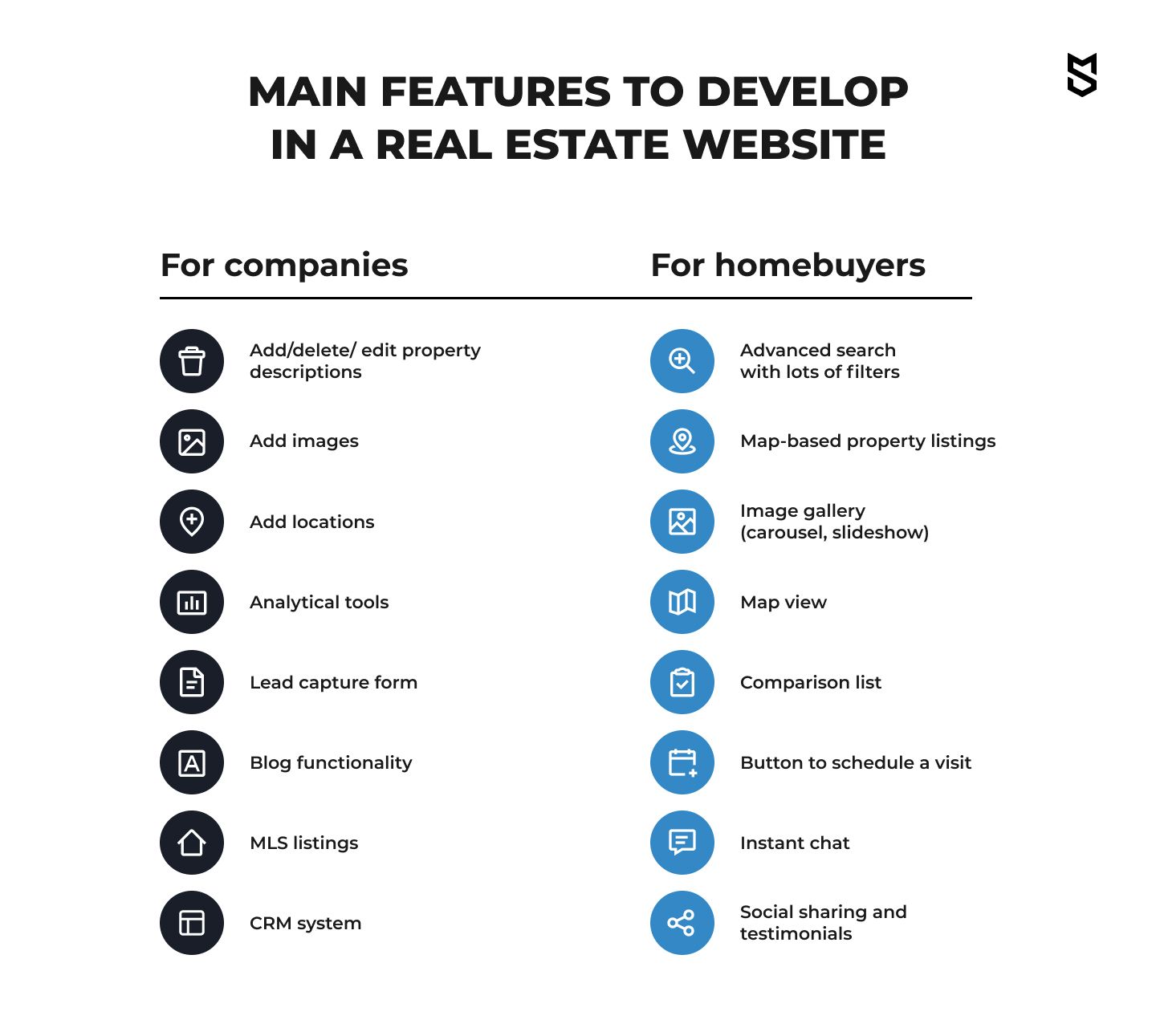
Let’s consider the features needed to create a real estate website that can improve the sales of real estate agents. The set of required features will be unique for each project, but we’re going to list the basic ones that will be enough for an MVP.
Features for companies
- Listings management features, which include the options of adding, deleting, and editing property descriptions, adding images, and location.
- Analytical tools to track the popularity of different listings, examine users’ interactions with the published content, etc.
- Lead capture form, a tool to collect customer data. Usually, users share their personal information in exchange for a discount, a valuable guide, etc.
- Blog functionality, which allows for text, audio, and visual content publishing,
- MLS (Multiple Listing Service), a database of property for sale in a particular geographic region, used by cooperating real estate agents.
- CRM (Customer Relationship Management) system. This is actually a set of features designed to make communication with clients easier and more efficient. If custom-built, it can allow you to track high-quality leads, analyze sales, automate some of the marketing and sales processes, arrange third-party integrations, and implement other useful features.
Features for homebuyers
- Advanced search with lots of filters. In addition to price, location, size, and condition, these might include such criteria as neighborhood infrastructure, crime rate, etc.
- Map-based property listings and map view, for which you can not only use Google Maps or Open Street Maps, but also integrate them with additional services to demonstrate various locations nearby, like shops, restaurants, schools, and hospitals.
- Image gallery (carousel, slideshow). Keep in mind that using high-quality visuals is essential when advertising property.
- Comparison list for the customers to weigh their options.
- Button to schedule a visit, preferably with an availability calendar.
- Instant chat that enables real-time messaging within the platform.
- Social sharing and testimonials so that customers can leave their feedback, share listings, and recommend the agent or the agency on social media.
Additional features
You don’t need to develop additional tools as part of the MVP. However, the features below will greatly contribute to a good UX and finalizing deals.
- Mortgage calculator. This feature, especially popular with the millennials, can help them compare their rent expenses with possible mortgage expenses and weigh the pros and cons of owning a home.
- 360-degree videos. With their help, users can get a comprehensive impression of a property and decide whether it’s worth seeing in real life.
- Recommendation engine. This tool can boost sales and offer potential buyers more options to choose from.
- Favorites page, which enables users to add the property options they liked to a list instead of just a cart. This way, the customers do not feel pressured to make the decision right away, and can later review their options and make a conscious decision. At the same time, the agents can analyze the lists and make personalized suggestions to the customers.
Real estate website design best practices
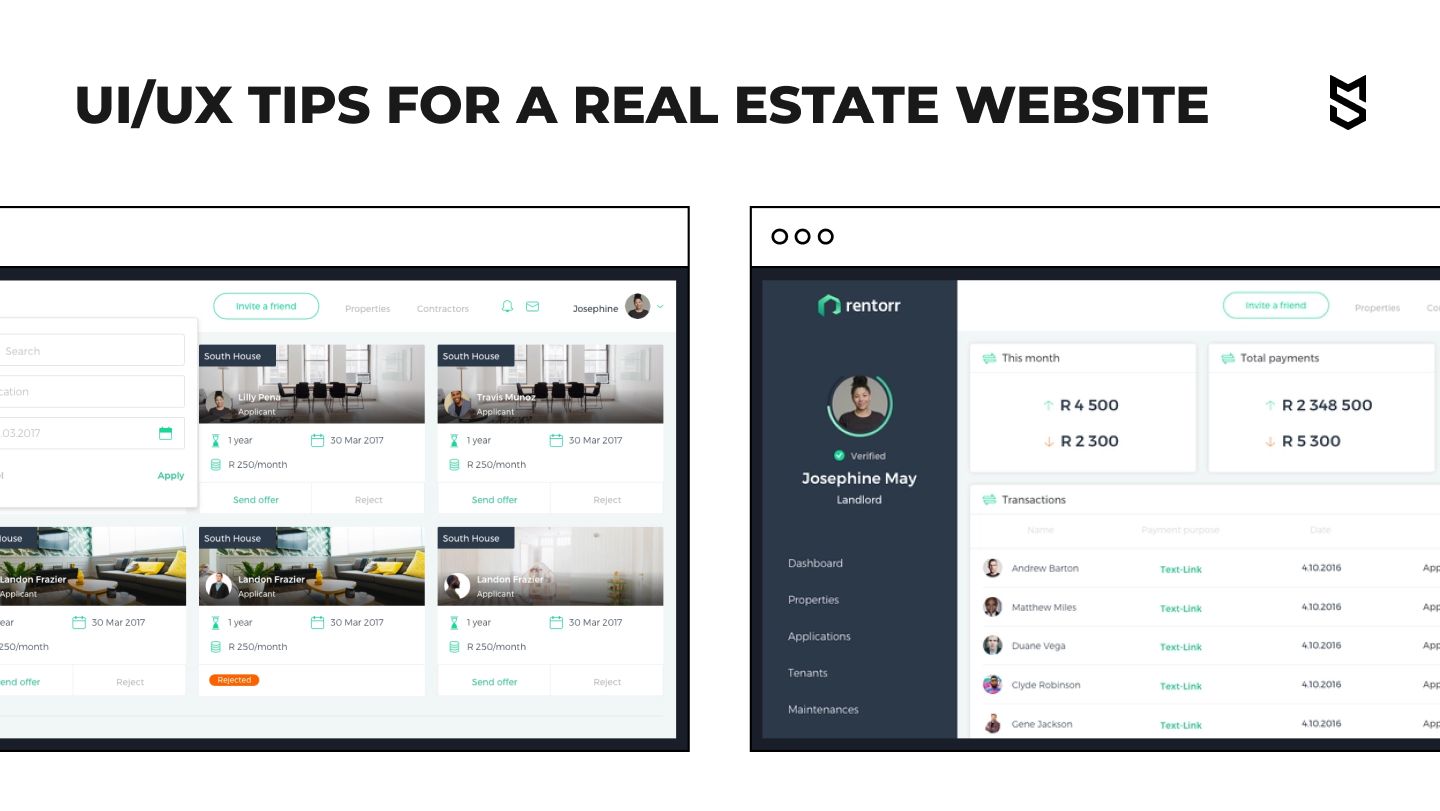
Creating real estate web design is the second most time-consuming part of the whole development process. Done in haste or with lack of focus, the design might result in high bounce rates later on. On the other hand, with proper attention and thorough design trends research, your site will appeal to prospective customers and encourage them to contact you. Here, we share 7 UI/UX design tips that might help you create the best real estate website possible.
-
User-centered design
To come up with efficient UX solutions, it’s essential to study the target audience’s needs and the problems they expect to solve on your platform. Communicating with prospective customers, studying reviews on your competitors’ websites, and checking out forums might help achieve that. -
Thought-through web usability
Here, we recommend not prioritizing visual trends over functionality. To avoid bounce rates, make sure every element of the website is consistent. For instance, there’s no need to overload the website with dozens of pages or animations that have no functional purpose. Keep it simple and logically structured. -
Intuitive navigation
When creating UI/UX design, it’s important to stick to a three-click rule. This means the users should be able to find everything they need within just three clicks. Elements that can help you achieve this are sticky menus, breadcrumbs, clear headings, and a functional footer with all the essential information. -
Engaging elements
Micro-interactions are one of the most significant trends with both websites and applications. You can encourage users to leave feedback, contact you, and simply stay on the website by inserting loading bars, interactive animations, and creative CTAs.Another great solution for a real estate website is interactive maps that show not only the location itself, but create a vivid picture of the neighborhood, with its parks, coffee shops, schools, and so on.
-
Credibility
Buying and even renting property is a pretty serious decision, so a real estate website has to look professional and trustworthy. To achieve this, you need to add testimonials, as well as social buttons that lead to your social media where customers can make sure you’re a real agent or agency representative.Another thing you can do is provide useful content, like guides on choosing a first home or posts about the legal aspects of buying commercial property.
The quality of the property photos and videos also influences how the users perceive the listings you post.
-
Effective search engines
Finding a suitable house, apartment, or office space is the main point of visiting a real estate website. To make the job easier for the customers, you need to enable them to filter their options out in accordance with various criteria. Size, price, location, policy regarding pets, neighborhood, infrastructure, and property features are just a few of the numerous factors that influence customers’ choices. -
Colors
The colors used in your real estate website design should inspire trust, stability, and credibility. White, blue, green, and orange are good options according to marketing psychology.
Sticking to all these directives might somewhat affect the real estate website design cost, however, the results will definitely be worth it in the long run.
Real estate website design in practice
Over our 9-year experience, the Mind Studios team has created dozens of websites and app designs, some of which were connected to the real estate industry. One of these projects, a website for Rentorr, is the perfect visualization of the UI/UX tips we’ve mentioned above.
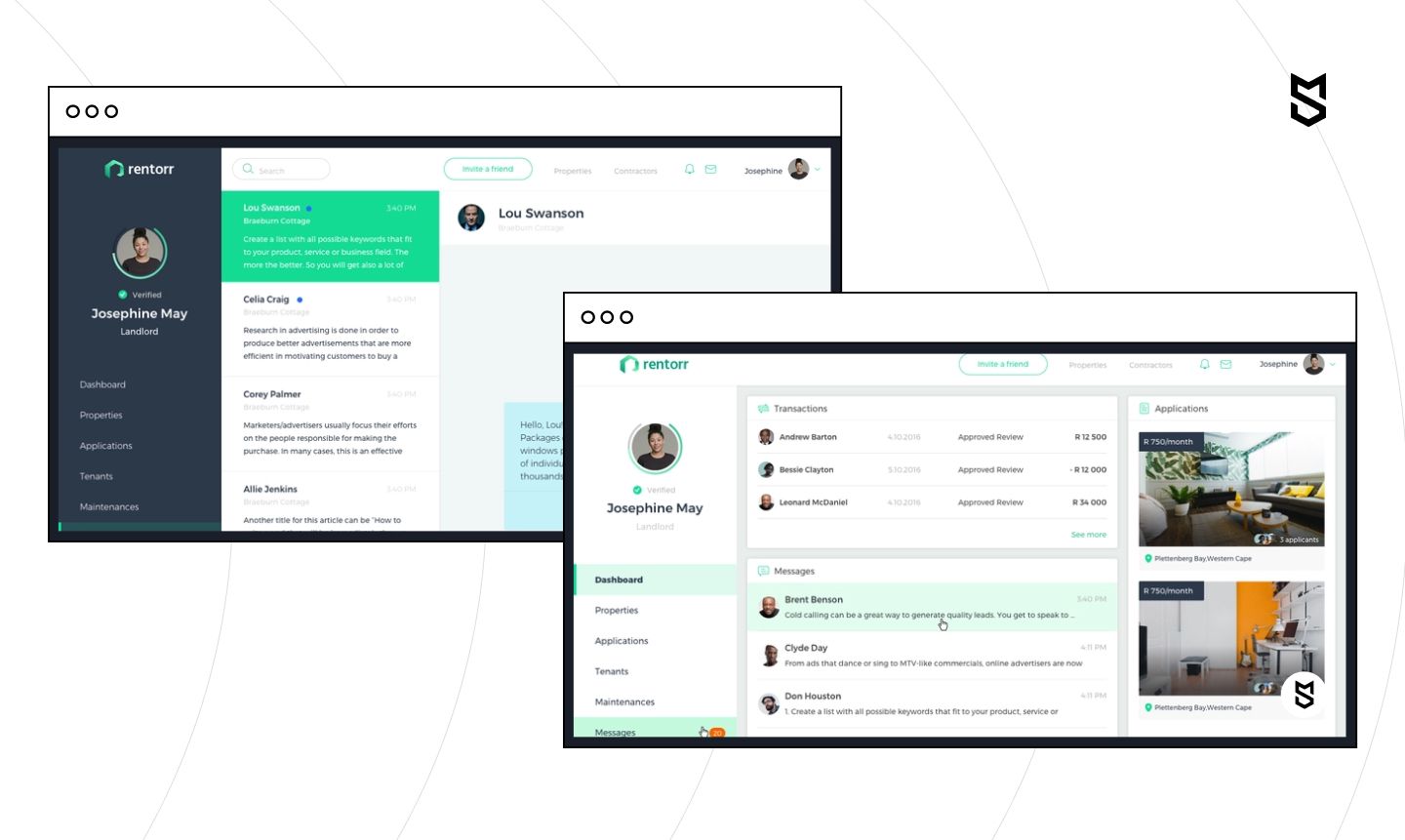
When creating the visual concept for the website, we chose green as the main color since it is connected to stability, life, and balance. We paid extra attention to the icons which illustrate the perks of the property.
In addition to standard features, we enhanced the platform with an advanced filtering feature and a price calculator. At the same time, all the elements turned out to be soft and neat so that the users didn’t feel overwhelmed. You can examine the design we created on our Behance page.
Three main real estate website development mistakes
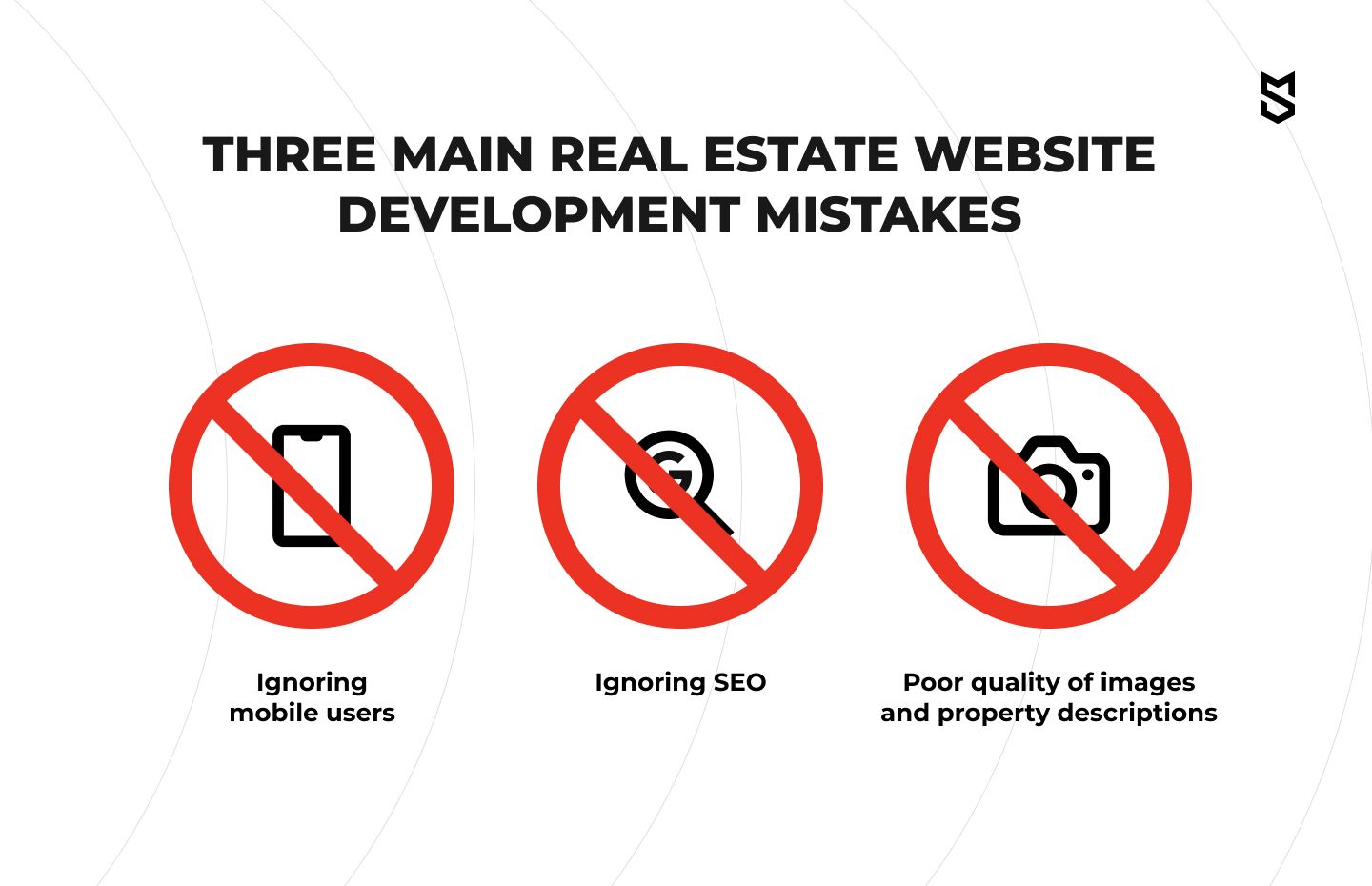
While there are many dos and don'ts when it comes to creating a real estate website, there are three most common mistakes that can easily be avoided:
-
Ignoring mobile users
Mobile marketing strategy matters for real estate projects, since the majority of searches are made via mobile devices. What’s more, modern home buyers like to stay in touch with their agents with the help of mobile-friendly websites, instant messengers, and social media. Therefore, you need to make sure that your platform works flawlessly on all devices, and that you are easily accessible on the platforms you’re advertising. -
Ignoring SEO
Since more than half of homebuyers are looking for properties online, you need a strong strategy for search engine optimization if you want to get discovered. Custom-built websites usually provide plenty of opportunities for implementing various content ideas while following SEO strategies.Google’s algorithms are changing quite often, and sticking to basic SEO rules might just help your content get on top. Start small and check if you are combining H2 and H3 headings, if the paragraphs are laconic, and if the text is readable.
-
Poor quality of images and property descriptions
These components are at the core of your real estate website, and users should be able to learn all the essential information about the property in no more than three clicks. That’s why you need to prototype your property descriptions very carefully, providing space for text descriptions, high-quality photos, videos, and 360-degree virtual tours. There also should be a questions and answers section, as well as buttons to immediately contact the owner or agent.
Real estate website development stages
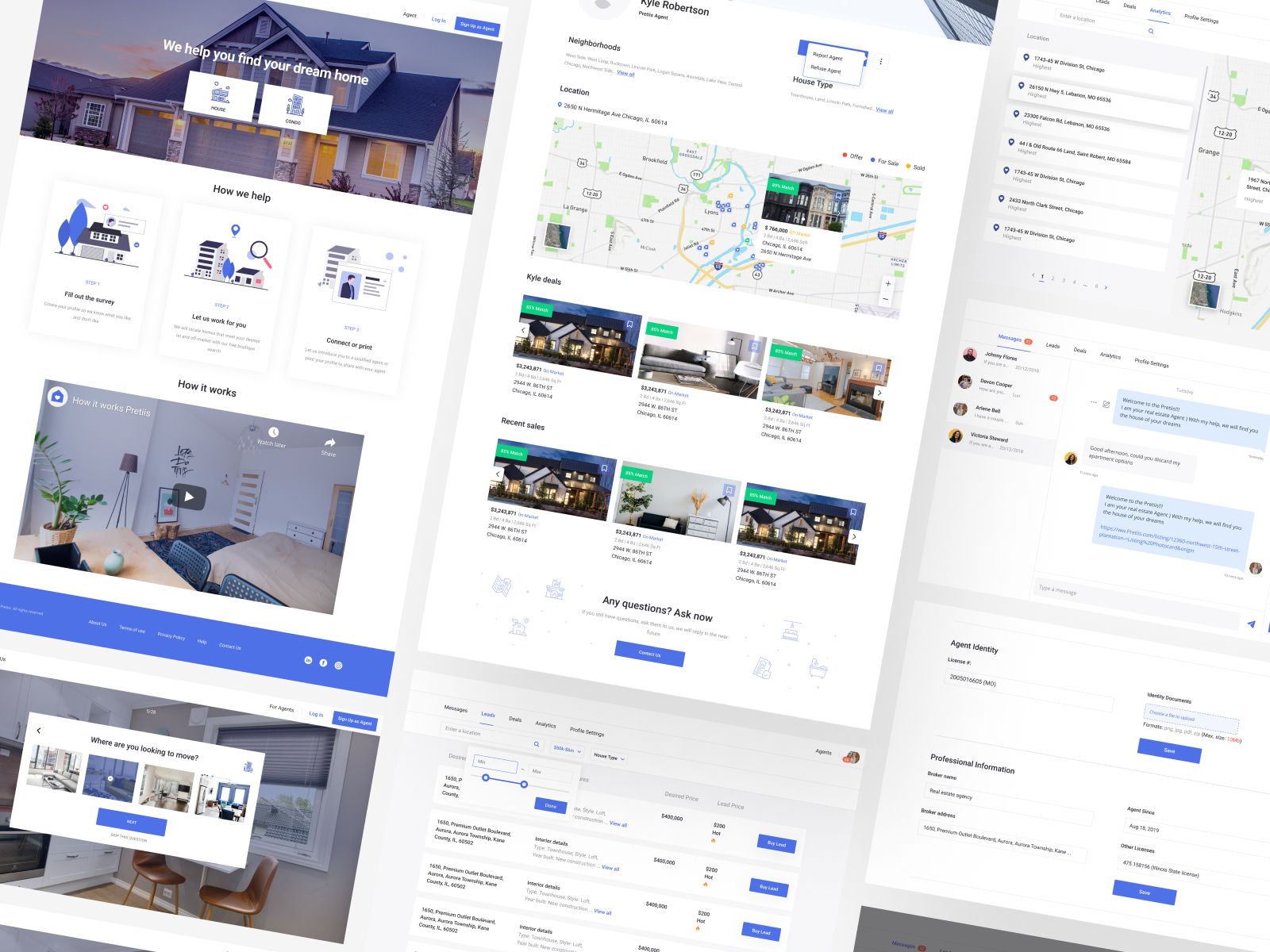
If you decide to build a real estate website that serves the purpose of bringing you more quality leads, the development process will likely include these four main stages.
- Discovery stage. Before the development team can actually build real estate websites, they first need to validate the idea, research the market, and analyze user personas and user needs. After that, they can proceed to develop software solutions that will help the clients achieve their business goals.
- UI/UX strategy stage. At this stage, UI/UX designers develop a visual concept of the website, work on its features that correspond with the users’ needs, solve navigational issues, and in the end, create high-fidelity prototypes — mockups of each page of the website.
- Development stage, during which front-end and back-end developers turn the final prototypes into code and build a fully functional website.
- Testing stage. At this point, quality assurance engineers check for any bugs the website has and report to the development team so that they can make the website flawless.
How much does it cost to build a real estate website?
The cost to develop any website depends on the complexity of the platform, the hourly rate of the team you’re working with, and the number of specialists involved. Building a custom real estate website from scratch usually requires the following team members:
- 1 project manager
- 1 UI/UX designer
- 1 frontend developer
- 1 backend developer
- 1 quality assurance specialist
Based on the features that we’ve listed in one of the previous sections, the number of professionals involved, and a $45 hourly rate, we’ve made a rough estimate of how much it might cost you to build a real estate website.
| Stage | Time (hours) | Cost (USD) |
|---|---|---|
| Project management | 240 | $10 800 |
| Discovery and research stage | 80 | $3600 |
| UI/UX design | 160 | $7200 |
| Front-end development | 800+ | $36 000 |
| Backend development | 560+ | $25 200 |
| Testing | 400 | $18 000 |
| Total | 2240 | $100 800 |
Conclusion
The significance of a real estate website benefits is indisputable. Having your own online platform can help you increase high-quality leads, optimize marketing strategy, and even simplify customer management processes. But most importantly, a real estate website can help strengthen your online presence and sync up with the younger generation of homebuyers.
When you take all these perks into account, investing in a real estate website doesn’t seem like such a daunting task. Besides, you really don’t have to spend a fortune on it. Even when on a budget, there are options of hiring an offshore outsourcing company with lower hourly rates, or starting with an MVP and updating the website gradually.
If you’re still in doubt about the project you have in mind, don’t hesitate to book a free consultation with Mind Studios. Our business development team will be happy to answer any of your questions regarding the cooperation process, possible solutions for your specific idea, and the cost to implement it.

